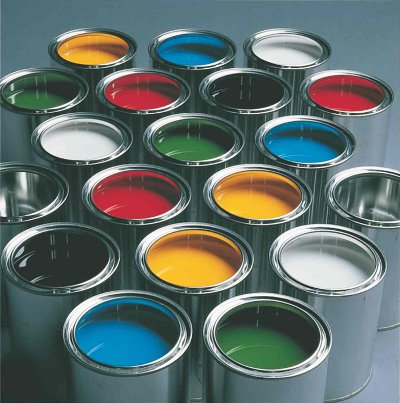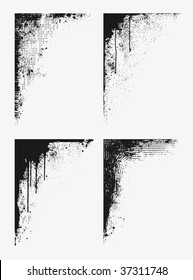
The particular material formulation of a conductive ink will vary depending on the printing process or application method, as different equipment will require different properties. These include flexography, rotogravure, screen printing, spraying, dipping, syringe dispensing, and stencil printing. There are many different ways to apply conductive inks. There are even online videos for creating ‘DIY conductive paint’ at home. There are many different paint products and formats developed for different use-cases and applications, these include small bottles, syringes, pens, jars, or even spray cans. Compared to metal conductors like silver, nickel or copper, graphite has a higher electrical resistivity, but it is much easier to source, and can be used in large quantities at a low cost. Silver conductive paint can be used for paper circuits, but due to the material’s rare nature, silver conductive ink is expensive compared to graphite-based paint, and subject to the market fluctuations around the price of silver itself. Finally, conductive inks made of metals tend to have a much higher price tag making them expensive to use in large-scale applications. Metal based paints also have particles which can fall out of solution or oxidize, so may have a shorter shelf life or lifespan once applied. Copper and silver paints can require solvents to remain in suspension so they can be toxic, require curing, ventilation or both.

It is worth familiarising oneself with the pros and cons of different conductors before choosing a conductive paint to use. There are many companies that manufacture conductive paints for the consumer market using conductive carbon, graphite, copper or silver as a conductive material. As is probably now clear, the distinction between inks and paints isn’t always clear, but in general, when working within printed electronics, most materials are referred to as inks, due to the use of printing in manufacturing. Additionally, a paint typically describes a material which sits on the surface of a substrate, whereas an ink will penetrate the surface like ink on paper. It’s generally accepted that paint is a material that is sprayed or brushed onto a surface and ink is a material which is printed onto a surface.

Many different formulations exist, each developed for specific applications with particular material properties.Īlthough most people use the terms conductive ink and conductive paint interchangeably, there is a technical distinction between the two terminologies and a few different definitions.

It consists of a conductive pigment, for example, silver, copper, nickel, or various forms of carbon, either suspended as particles or dissolved in a solution.

What is conductive paint and conductive ink?Ĭonductive paint and conductive ink is a paint that is electrically conductive, meaning it conducts electricity. We’re obsessed with the capabilities of these materials and wanted to share our knowledge so that you can start bringing this unique set of capabilities into your projects and products. But there is an exciting world of new applications available thanks to advancements in materials science, manufacturing and electronics. Originally developed for use in printed electronics, applications for these materials were traditionally reserved for printing the PCBs (printed circuit boards) that live inside electronic devices, like the smartphones and computers we use every day. Conductive inks and paints are used in countless contemporary products thanks to their unique propertiesĬonductive inks or conductive paints have been around for a long time.


 0 kommentar(er)
0 kommentar(er)
